Get the lowdown on this popular game fish, wherever they may roam, from the local experts.
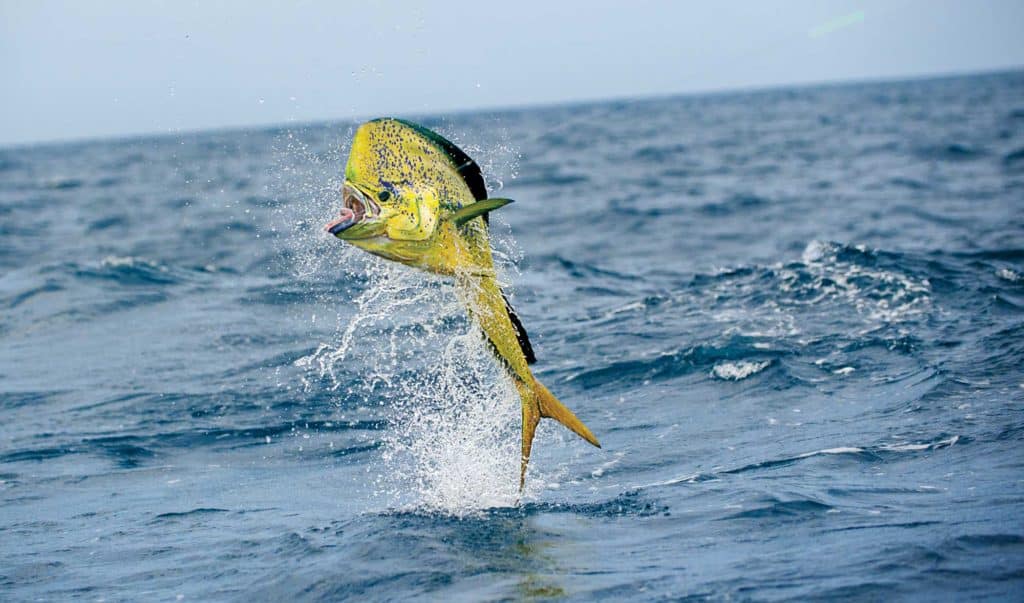
Jersey Pot Hoppin’ – Metro Mahi
By Nick Honachefsky
The Jersey coast really blossoms from July through September.
“We’re targeting mahi from a half-mile off the beach to 15 miles out, and we’ll run 20 to 30 miles if need be,” Capt. Jerry Malanga says. “It’s all about hopping around the lobster pots to find them.” Malanga watches for 70- to 75-degree, clean and clear blue water loaded with nutrients. “The first week of August is usually peak time to find dolphin around the high fliers,” he says. “I’ll find them in schools of 40 to 60 fish around a pot after an east-northeast blow, when the Gulf Stream eddies push in weeds and floating debris. The dolphin drop off the floating debris, locate a pot line, and hold tight through the summer.”
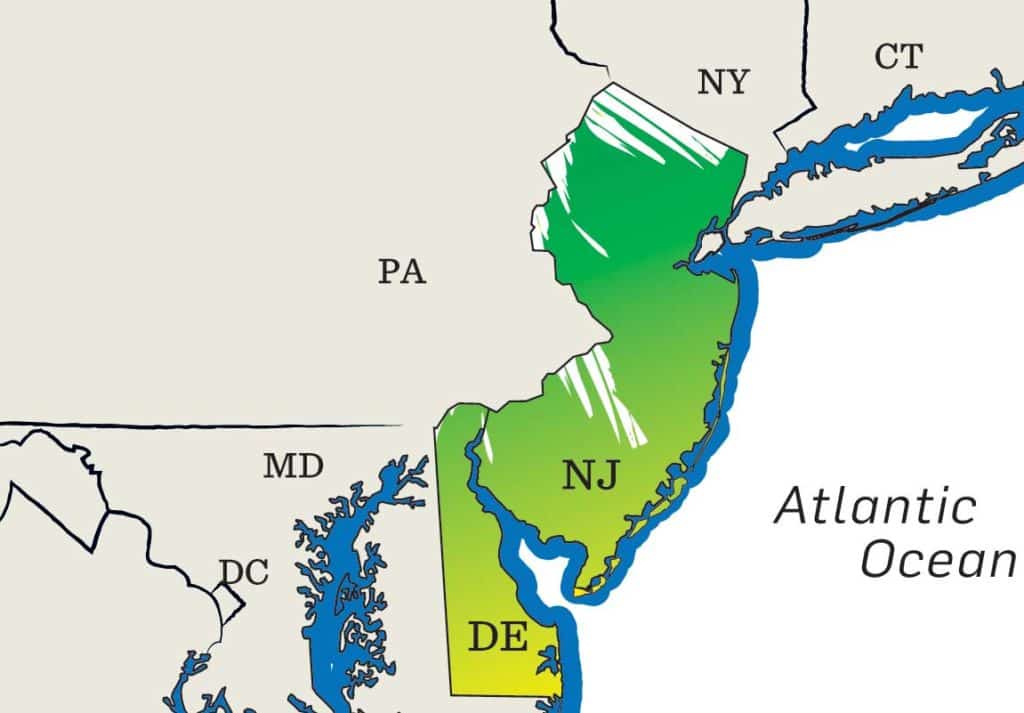
Hopping pots is the key to success. “I’ll work a string of pots, weaving in and out of the high fliers, looking for flashes around the buoys,” Malanga notes. “Usually, I search for the end of the lobster line, where two pot buoys are close together, because they hold more fish with the marine growth on both pots and their respective tethering lines.”
To ignite a bite, Malanga brings a bucket of fresh spearing, idles to within 20 feet of a pot marker, chucks a handful, and then waits 30 seconds to spy any flashes.
“Mahi won’t ever be right on the surface. They hold 10 to 30 feet down on the pot line. If I see fish darting around, but they aren’t inhaling any artificials, I’ll throw out live killies or peanut bunker on a 1/0 to 2/0 circle hook. That usually gets them fired up to feed, and once one dolphin eats, then they all seem to turn on,” he says.
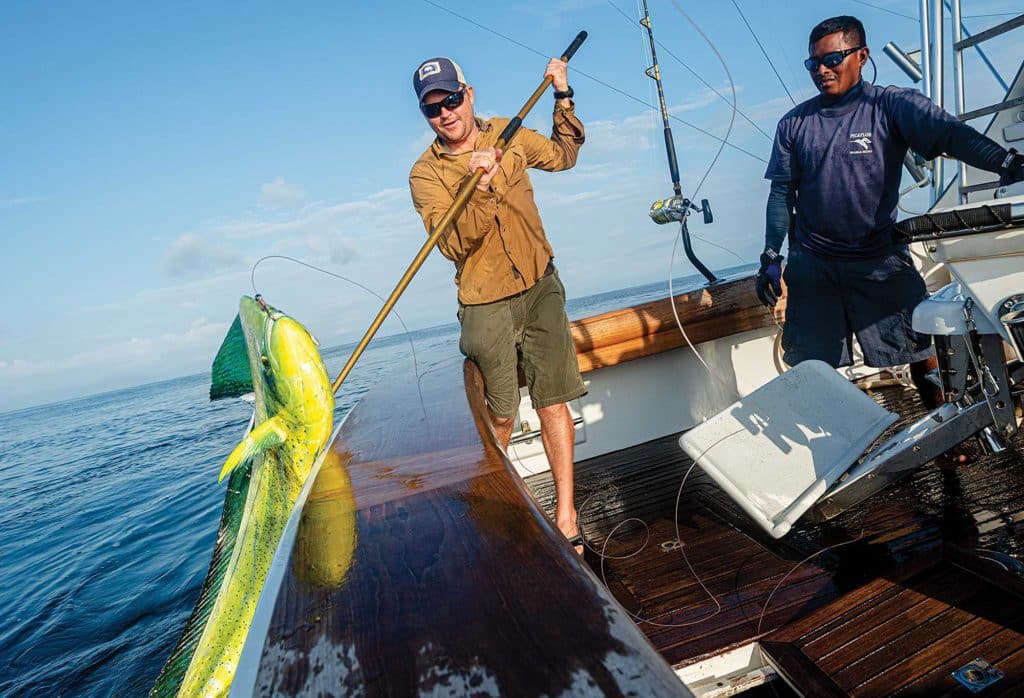
When the bite gets roaring, Malanga switches to artificials on lighter tackle, employing a 7-foot, medium-power, fast-action spinning rod and Shimano Stradic 5000-class reel spooled with 30-pound braid, fastened to a 36-inch piece of 20-pound fluorocarbon leader via a double uni-knot connection. Choice lures are 3⁄4- to 1-ounce leadheads tipped with a 4- to 53⁄4-inch bubble-gum pink Fin-S, or a Rapala X Rap in white or mullet color scheme.
“In New Jersey, most mahi found within 3 miles of the shore are chicken- size, up to about 5 pounds, but they get bigger farther out, averaging 10 to 12 pounds 3 to 15 miles out, where it’s not rare to land even larger mahi of 25 to 30 pounds.”
Jersey mahi? Bet on it!
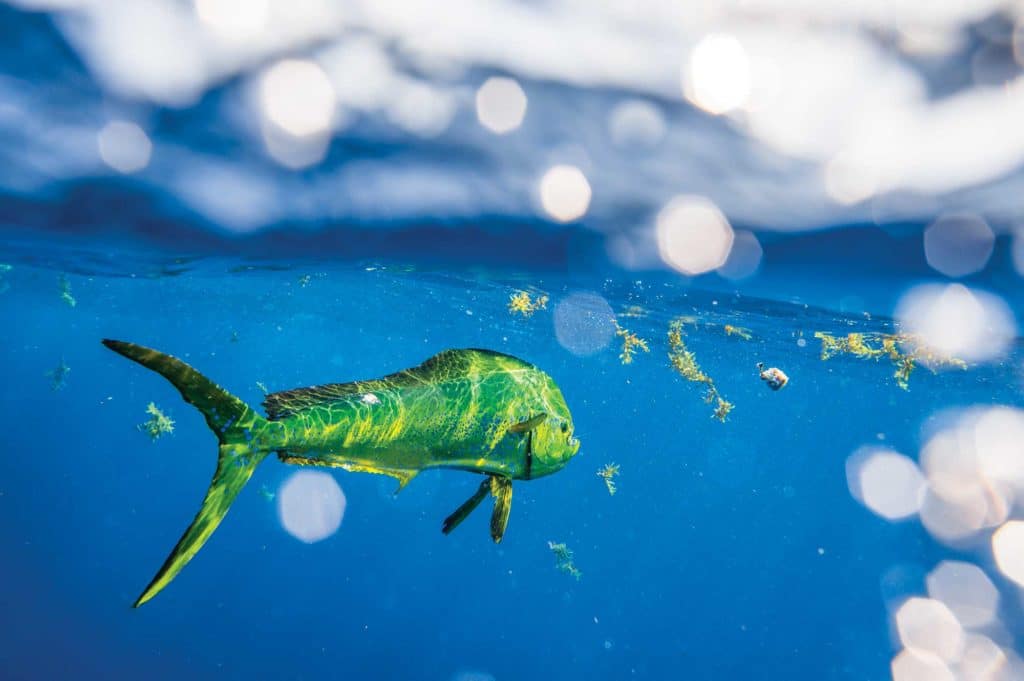
Big-Guns Dorado – Texas/Northern Gulf
By Dave Lear
From Florida’s Middle Grounds to waters off South Padre Island, Texas, dolphin are plentiful in the Gulf of Mexico. Bulls exceeding 40 pounds are routinely landed—although, often as an incidental catch—by boats trolling for billfish and tuna. Longtime pros such as Capt. Scott Hickman of Circle H Charters in Galveston, Texas, have honed tactics for trophy fish. The season normally runs from May through September.
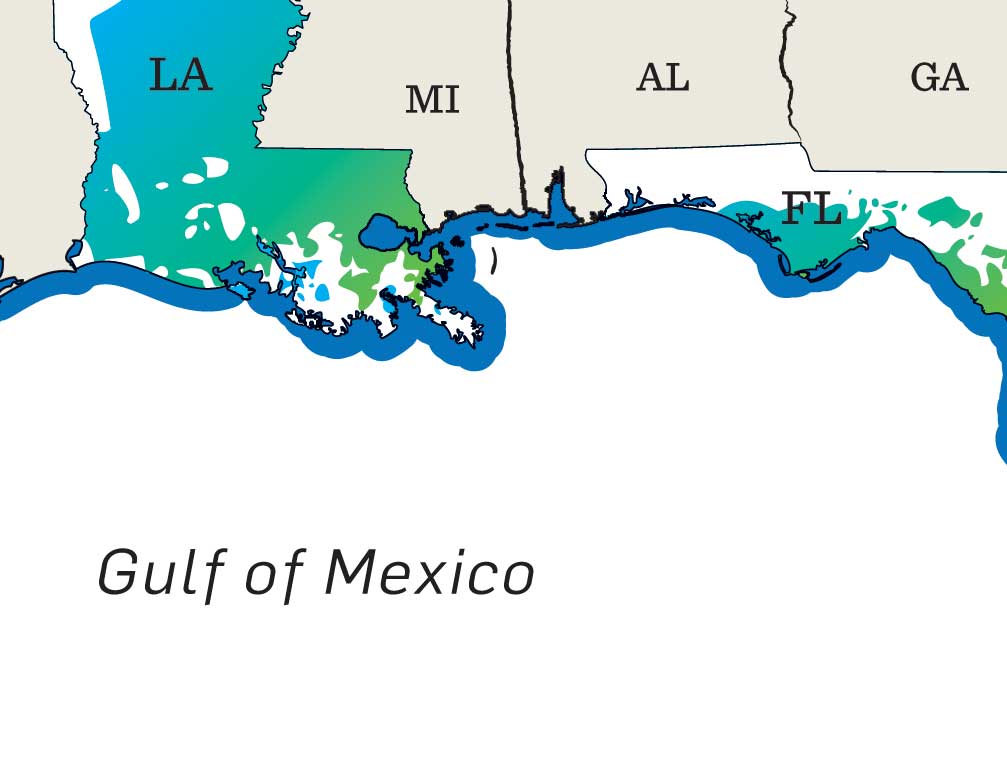
“Beyond the Flower Garden Banks, the water drops off to 1,000 feet,” Hickman says. “We haven’t had the amount of sargassum we typically get the last couple of years, but we still score some fish by pitching naked ballyhoo and sardines under weed lines. My go-to rig for big fish is a trolled Ilander lure in blue-and-white or chartreuse-and-white, rigged with a select ballyhoo. It’s the most effective combo for dorado. If it’s choppy, I go bigger, and I downsize in calm conditions.”
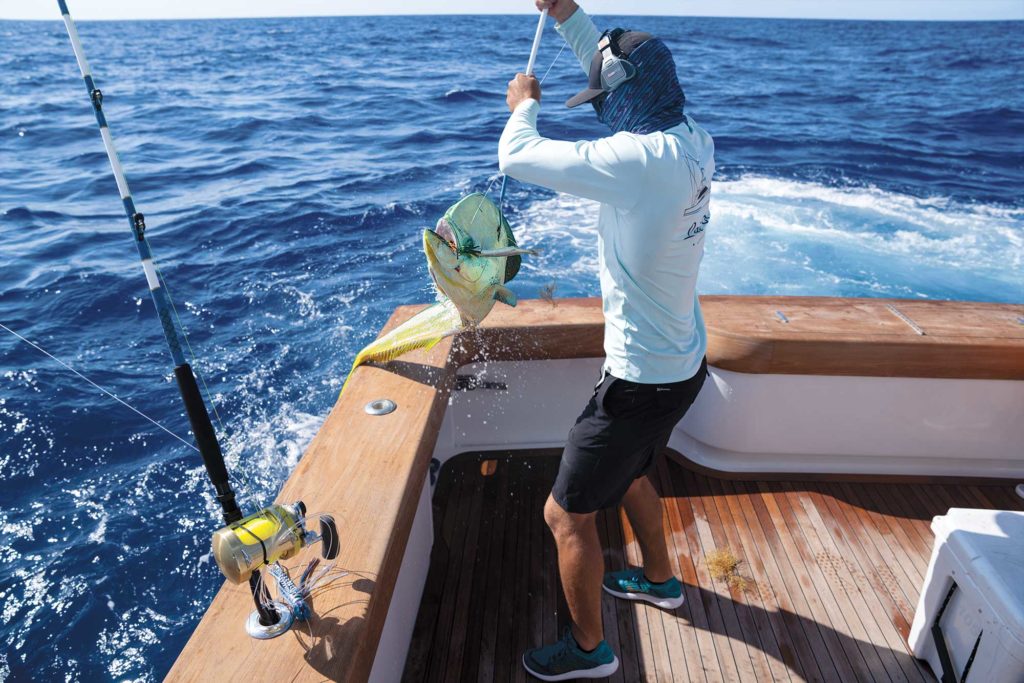
Hickman normally uses a 7/0 Mustad Big Gun hook with 200- to 300-pound monofilament leaders, in case a blue marlin pops up behind the spread. He pulls the rigs from two-speed 30 single-wide Avet reels loaded with up to 180-pound braid, and paired with 61⁄2- to 7-foot stand-up rods. The lighter outfits are easier to handle, and can be used with a gimbal cup rather than a full harness. Hickman fishes aboard a 36 Contender with triple outboards or a 48 Fountain with twin diesels to run as much as 100 miles off the Texas coast. He’s also a big believer in offshore oceanographic data.
“Garmin has a satellite service that downloads real-time data right into the chart plotter. It shows rips, upwellings and sargassum, so that takes a lot of the guesswork out of where to go,” he says. “It’s almost to the point of unfair, but it really does make a difference for a successful and economical trip.”
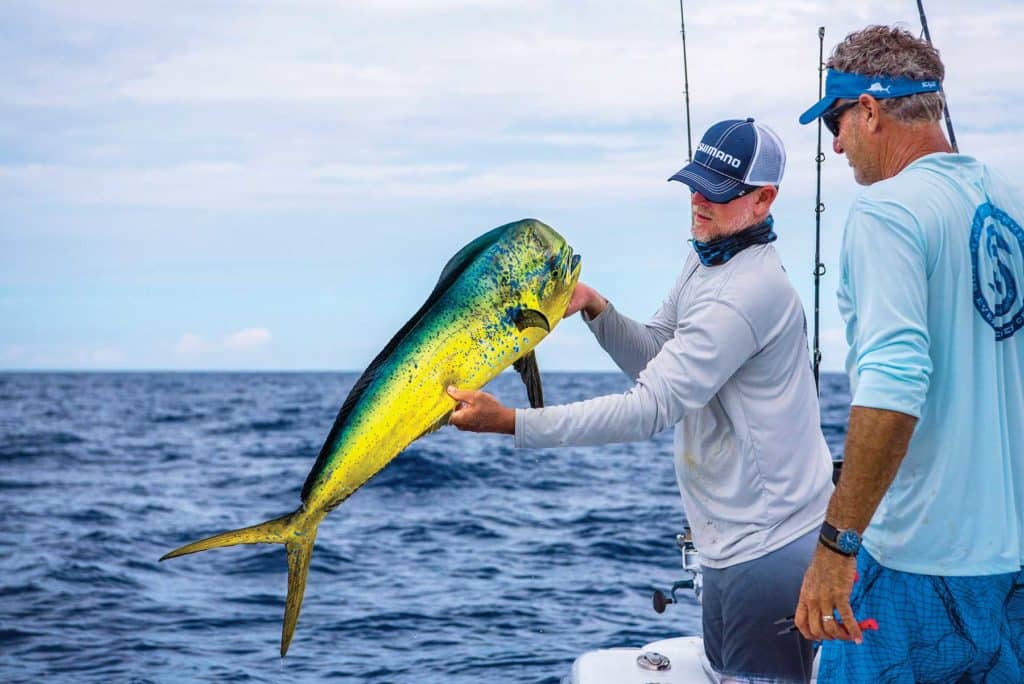
Travel Plans – South Florida
By George Poveromo
South Florida dolphin hunters await that first push of migratory fish to kick off our season. But exactly when is this most likely to occur? Dr. Wessley Merten, head of the Dolphinfish Research Program (dolphintagging.com), says that 17 years of tagging dolphin indicates progressively later arrivals.
March is traditionally when young-of-the-year dolphin venture into Florida Keys waters. However, in recent years, these early arrivals have lagged into April. The Keys and South Florida experience the heaviest migrations from April through June. Ironically, the Keys sees another uptick in schoolies and larger solitary fish in August and September.
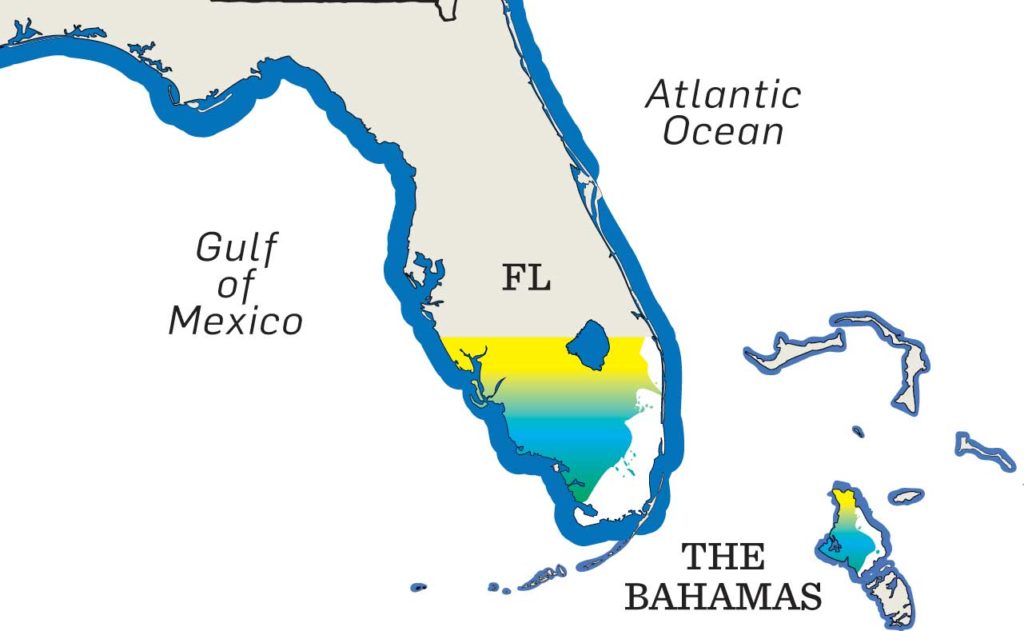
Exactly how fast are these fish migrating? “Data indicates, on average, it takes dolphin one and a half months to move up the Eastern Seaboard before entering the Atlantic Ocean from Georgia north to the Mid- Atlantic Bight,” Merten explains.
Recapture data suggests dolphin move up-current through South Florida from the Old Bahamas Channel (around Cay Sal Bank) and via the Loop Current.
“Dolphin moving westward via the Antilles Current may enter the Bahamian archipelago via the Northeast Providence Channel Passage and swim through the Northwest Providence Channel Passage to South Florida,” Merten says.
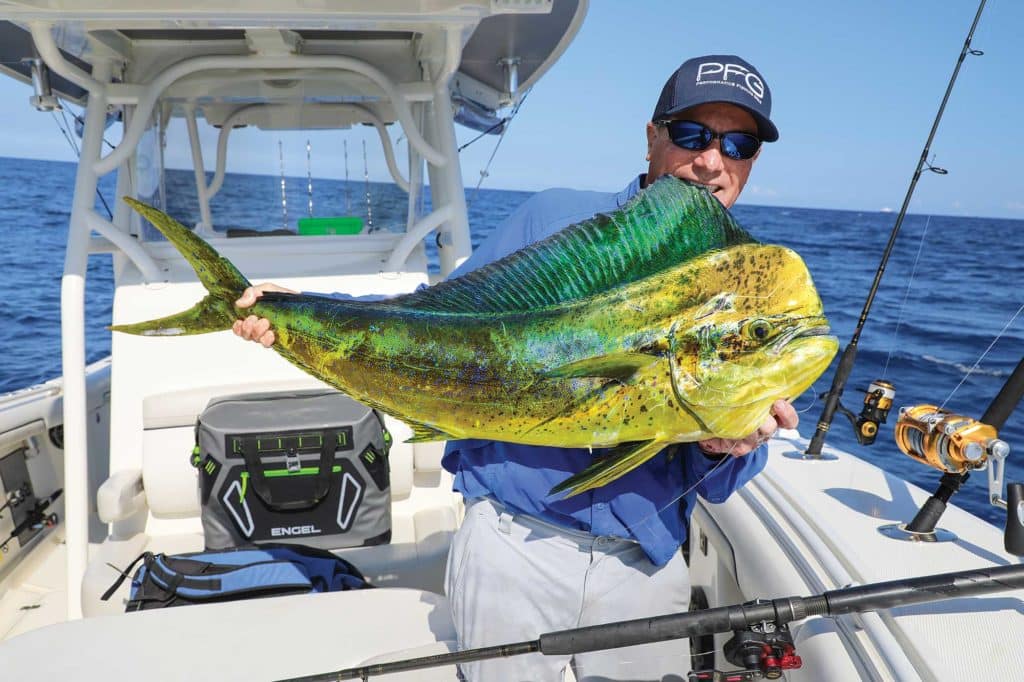
“Given the trajectory of the Florida Current, dolphin are likely driven to the north once in the Florida Straits. For dolphin that enter US waters north of Walker’s Cay, the beginning of the Gulf Stream may inhibit fish from entering the South Florida region.”
As a general rule, dolphin migrate closer to the coast during the spring, following the edge of the Gulf Stream and an abundance of forage. A good fishing window then is between 200 and 600 feet.
As summer marches on and the Gulf Stream pulls farther offshore, longer runs are often required to locate dolphin. This is when you make 15- to 30-mile runs in search of weeds, working birds, debris, and pockets of flying fish, all of which can lead to dolphin.
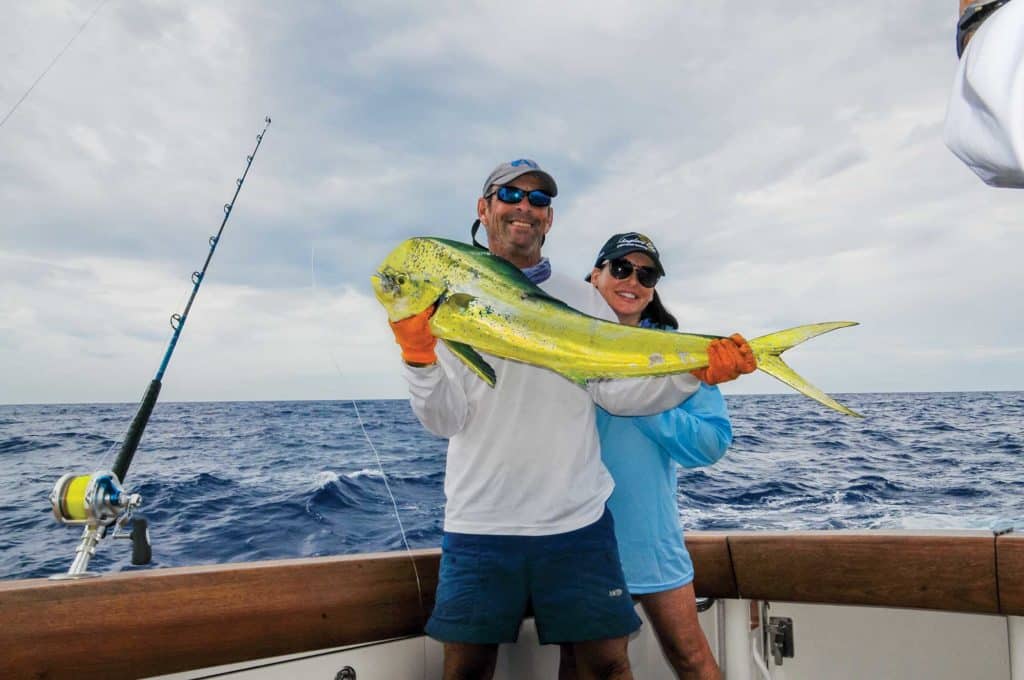
Bailers, Slingers and Gaffers – Mid-Atlantic
By Ric Burnley
From late April through September, when dolphin action is hot, crews should be prepared to switch from trolling ballyhoo to bailing with cut bait within seconds.
Capt. Jimmy Hillsman, manager at Oceans East Bait and Tackle in Nags Head, North Carolina, starts by searching for a temperature change or weed line, and tries to be first on the scene. “Position is everything. You don’t want to be fourth or fifth in line,” he says. Instead of fishing in a crowd, Hillsman suggests finding an unexplored stretch of grass.
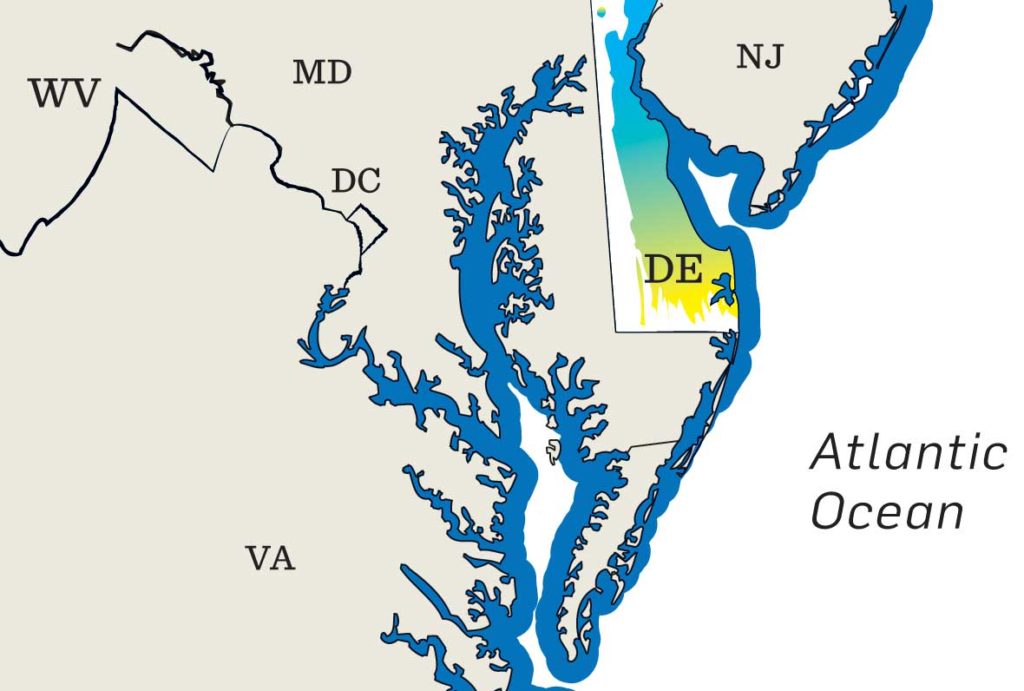
Once he’s on the scene, he slows the boat to 4 knots. “Dolphin can be lazy,” he says. “Sometimes we have to slow down to get a bite.” Hillsman usually deploys small ballyhoo. “When the fishing is really good, we’ll use a strip of squid behind a pink or green skirt, or jet head.”
He pulls the dink baits on 30-pound outfits with 20-pound monofilament and a 20-foot leader of 50-pound mono. He then rigs each bait on an arm’s length of 50-pound mono and attaches it with a 250-pound-test snap swivel and a surgeon’s loop. “Rigging the baits on a short leader makes them quicker to switch out,” he explains.
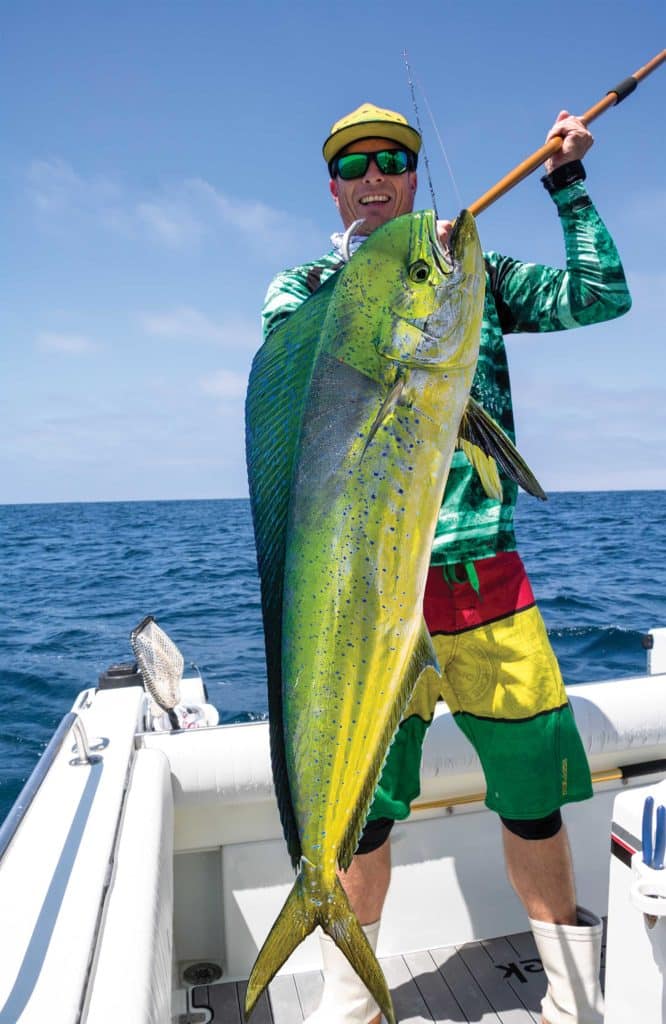
When he hits the mother lode, Hillsman quickly switches to 20-pound boat rods with 20-pound mono. He attaches a 250-pound-test snap swivel to the main line and clips on a 1-ounce trolling sinker. The trolling sinker is clipped to an arm’s length of 50-pound mono with a 5/0 bait-holder hook. Hillsman keeps a bag of squid or albacore strips ready to bait the bailing rods.
When the frenzy dies off, he’s quick to switch back to trolling until he finds the next school. “The bite may only last a couple of hours, or it could be isolated to a small section of a weed line,” he points out. To be prepared when opportunity knocks, Hillsman stresses that anglers must have both trolling rods and bailing rods rigged and ready for action.
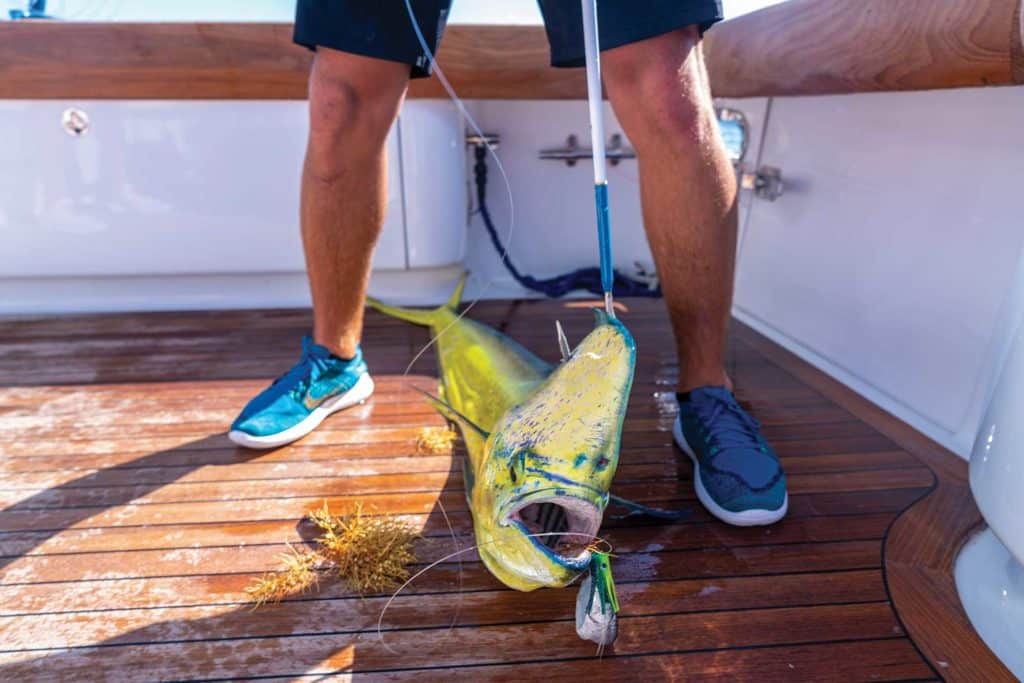
Spiral Logic – Southern California
By Jim Hendricks
In Southern California offshore waters, patches of floating kelp known as paddies are the key to finding and catching dorado, the West Coast name for dolphin. In summer, schools migrate north from Mexican waters and hang around these golden weeds, but the dorado can sometimes grow skittish and reluctant to bite once they reach California.
Productive paddies range anywhere from the size of a trash-can lid to as wide as a garage door. To find paddies, San Diego-based Capt. Barry Brightenburg scans the waters from a tower using gyrostabilized binoculars. “I can spot paddies a mile or more away using the gyros,” Brightenburg says. “Terns flittering above it is a sure sign that fish are feeding below.”
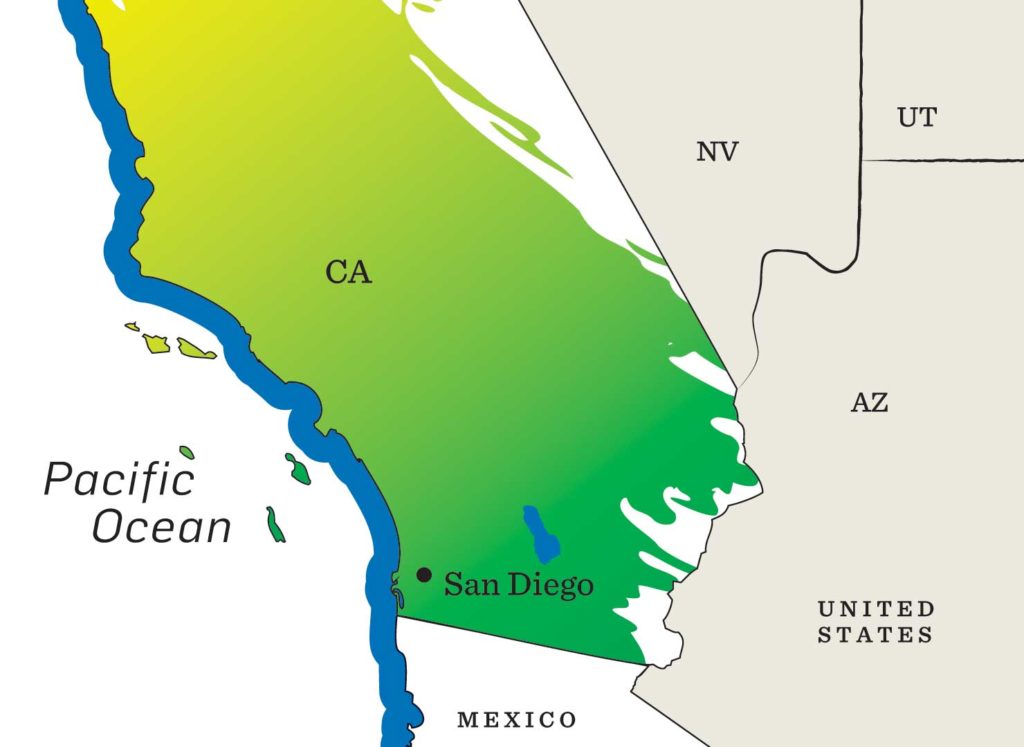
With a paddy in sight, Brightenburg resists the urge to rush in. Instead, he idles toward the weeds while slow-trolling two live sardines or mackerel, about 100 feet astern.
Rather than heading straight for the paddy, he steers a 150-foot circle around it, gradually tightening the diameter with each loop, following a spiral course around the paddy. At the same time, he chums with one or two live baits every 100 feet or so to attract the dorado to the boat.
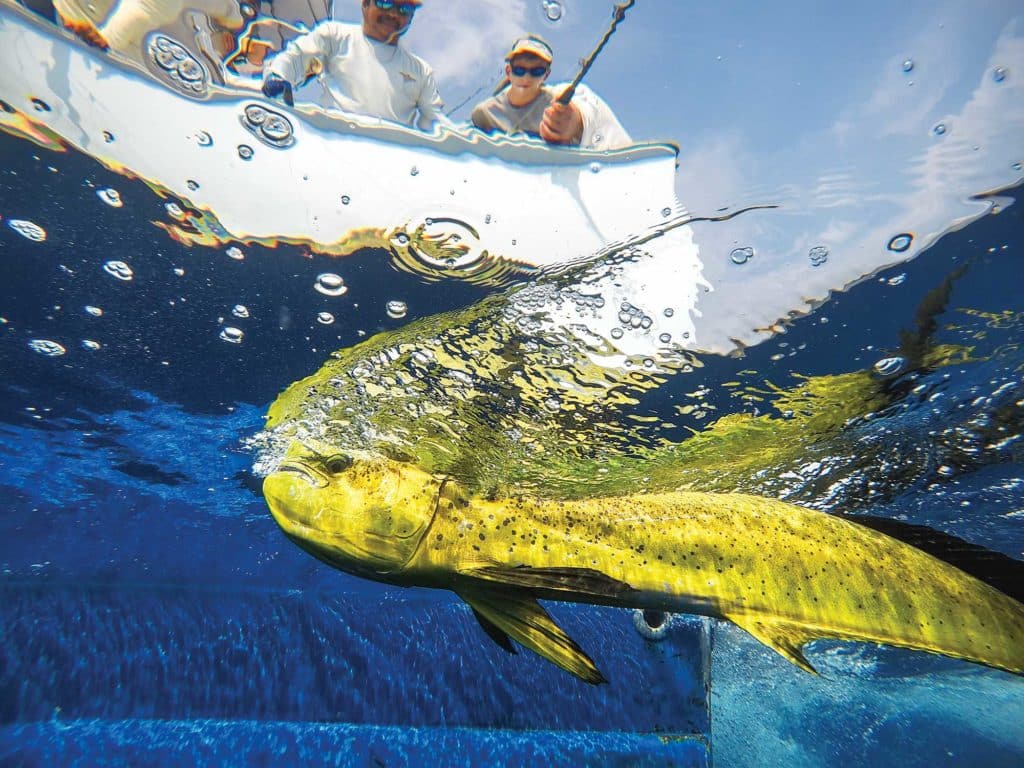
“Dorado seldom hang right under the weeds,” Brightenburg points out. “More often, they swim around the perimeter of the paddy, and slow-trolling in a circle helps you locate them.” Bites often occur well before the boat reaches the paddy.
This technique also familiarizes the fish with the boat in a gentle, nonthreatening way, he believes.
“The boat gradually becomes part of the environment,” Brightenburg says. As a result, the dorado are more likely to accept the boat’s presence and attack the baits.
Sometimes the boat becomes a de facto paddy, and the dorado start hanging around the shadow of the hull instead of the weeds. As with dolphin fishing in other parts of the world, keeping at least one fish hooked at all times helps to keep the school close to the boat.









